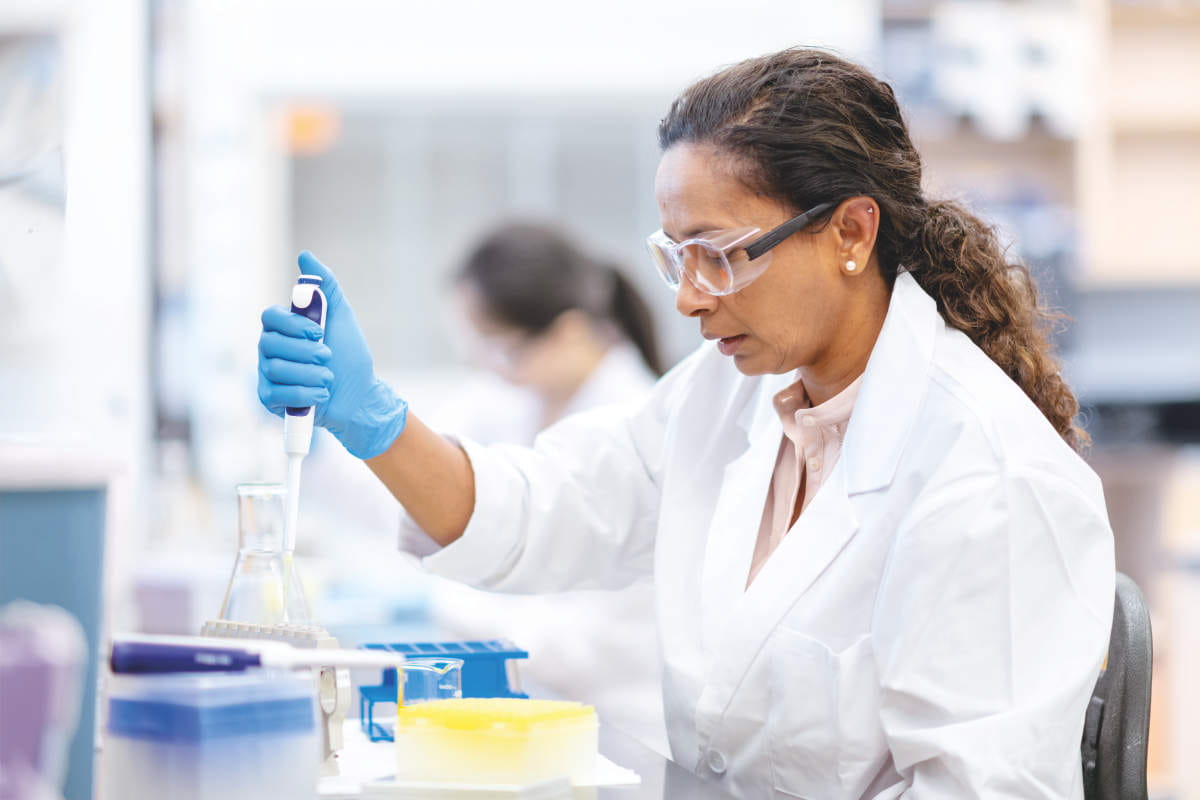
Essential tools for your microbiome research workflow from start to finish
Microbiome research is hard. Samples come from a multitude of origins, can be full of contaminants and contain a myriad of different organisms. This is why you need a streamlined microbiome workflow. Our kits, assays and instruments are designed to work seamlessly together from the experiment’s beginning to the data analysis. Whether it be sample disruption, nucleic acid extraction, microbiome profiling with dPCR, or NGS, statistics or bioinformatics analysis, our microbial research tools are designed for your needs: Purity, precision, reliability and ease of use.
Find the specific kits, assay, instruments and other tools you need for every step of your microbiome research below.
Sample stabilization
When taking a stool sample, the nucleic acids and microbes inside react to any variation in oxygen or water content as well as the temperature. This, plus an extensive storage time before nucleic acid extraction, can lead to the rise and fall of certain species and change the microbial composition.
Hence, to get the most accurate insights into your sample, stabilising its microbes and their nucleic acids is a crucial step. Our DNA/RNA protection solutions keep your samples intact and preserve the microbial integrity.
Discover products for microbiome sample stabilization
Sample disruption
Discover disruption and homogenization products for microbiome sample disruption
Human microbiome samples
Human biomedical sample preparation – highlights
Discover products for human microbial sample preparation
Environmental samples
Environmental and agricultural sample preparation – highlights
Discover products for environmental and agricultural microbiome sample preparation
Less hands on time with automated sample preparation systems
Sample preparation is a significant factor for the success of your microbial workflow and its reproducibility. When different users extract nucleic acids from samples, chances of errors from multiple manual interventions increase. This can lead to variation in nucleic acid quality like degradation, concentration or the presence of contaminants and impact your results. Hence, automating the extraction of nucleic acids is one way to ensure reproducibility. Learn more about QIAGEN’s automated solutions for standardized and reliable sample preparation.Sample analysis
Analysis by NGS, dPCR, qPCR
Whole genome and targeted sequence analysis with next generation sequencing
NGS for microbiome and microbial detection and characterization – highlights
Discover NGS products for microbiome
Digital insights
Discover digital insights for microbiome analysis
FAQs about microbiome research methods
What are 16S and ITS rRNA sequencing?
The most common method used for profiling microbial communities is sequencing the 16S ribosomal RNA (rRNA) gene and Internal Transcribed Spacer (ITS) regions for bacteria and fungi, respectively. Due to their universal distribution and conserved nature, the 16S rRNA and ITS genes are well-established genetic markers used for bacterial and fungal identification and classification.
The 16S rRNA gene consists of both highly conserved and hypervariable regions. The conserved regions serve as primer binding sites for PCR amplification of the variable regions and the variable regions contain sequences that can be used for bacterial identification and classification.
What is Shotgun Metagenomic Sequencing?
In contrast to 16S rRNA and ITS sequencing, shotgun metagenomic sequencing covers the entire genome of all organisms present in a sample.
Shotgun metagenomic sequencing covers all genetic information in a sample; therefore, the data can be used for various analyses, e.g., metagenomic assembly and binning, metabolic function profiling and antibiotic resistance gene profiling.
What is Metatranscriptomics?
Metatranscriptomics studies the entire gene expression profile of microbial communities in natural living environments. It enables the quantification of gene expression levels and their changes in response to different conditions, e.g. physiological vs. pathological conditions in an organism.







